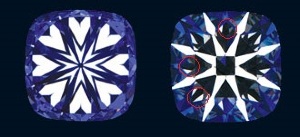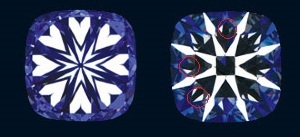Hi all,
Forgive me if this question sounds rudimentary, i'm new to diamonds.
i was just wondering that under the hearts & arrows scope, some of the "mini triangles" lack symmetry (as in the attached picture)
This is also true in some of the actual diamond photos,
while the same diamond on the ASET and IdealScope, the triangles look fine, why is this?
Thanks Guys!

Forgive me if this question sounds rudimentary, i'm new to diamonds.
i was just wondering that under the hearts & arrows scope, some of the "mini triangles" lack symmetry (as in the attached picture)
This is also true in some of the actual diamond photos,
while the same diamond on the ASET and IdealScope, the triangles look fine, why is this?
Thanks Guys!









300x240.png)